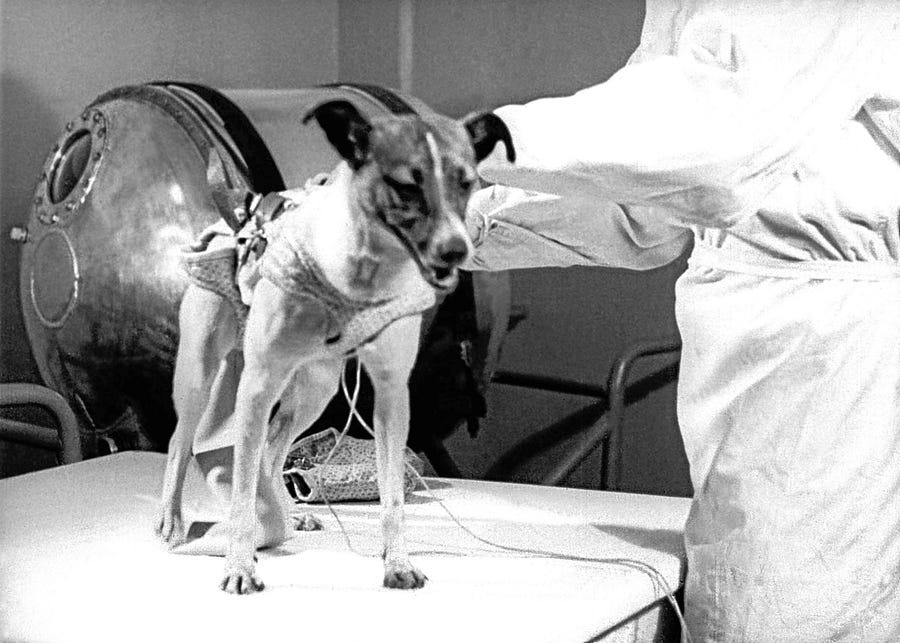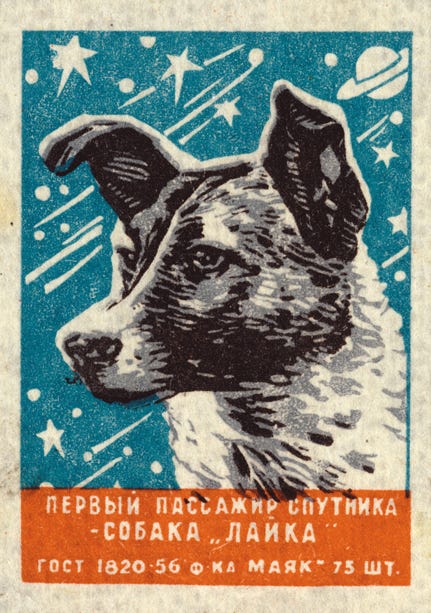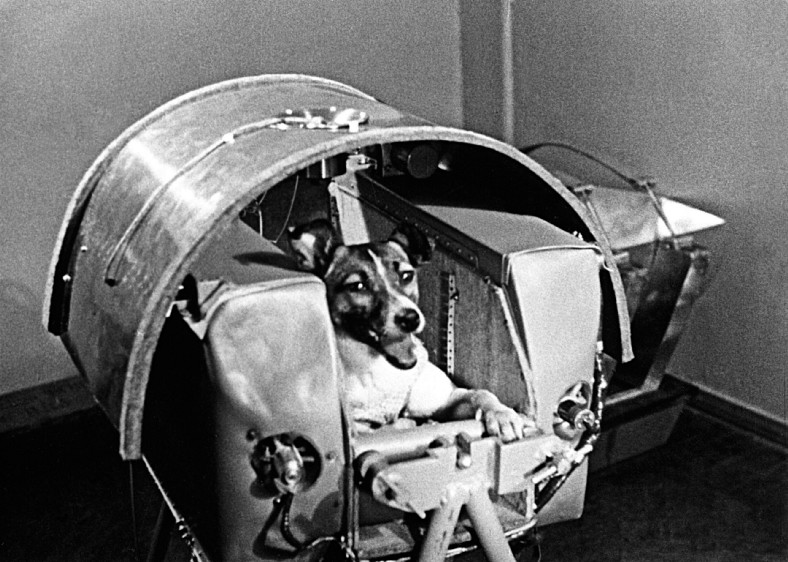 he Cold War era has brought one of the greatest races in the history of mankind, which was the Space Race between the Soviet Union and the United States. The aim of the race was for the first nation to reach the moon which ended up being the United States, but in the early days, the Soviet Union was in the lead by sending the first life into space.
he Cold War era has brought one of the greatest races in the history of mankind, which was the Space Race between the Soviet Union and the United States. The aim of the race was for the first nation to reach the moon which ended up being the United States, but in the early days, the Soviet Union was in the lead by sending the first life into space.
A dog and a mission
Found on the streets of Moscow, Laika, the dog without a master, fulfilled all the criteria of an ideal candidate for a cosmonaut. At that time, scholars from the Soviet Union were looking for a living, photogenic and docile mammal. In addition, Laika was selected because she also showed inventiveness. She is said to have always had a “curious look”. The puppy was trained alongside other dogs and was chosen to take the place available on Sputnik 2, a satellite that was not designed to return.
Initially called Kudeavrka, whose meaning is “Little Creation”, Laika was “baptized” after the Russian term for the verb.

The Soviet Union did not take account of the ethical implications of this mission, especially due to the fact that this was a racewith political implications within the Cold War, everyone within the Soviet Union actually endorsed Laika and her mission. However, internationally, there have been protests against violence against animals when the Soviet Union announced that the mission will take place and a dog will be sent to certain death.
Protests took place in front of the Embassies of the Soviet Union on the territories of other states, but not on the territory of the Soviet Union or other countries under the control of Soviet communism. During that time, Soviet radio stations informed the population that Laika was in very good health whilst being prepared for the big day.
Laika’s preparations
Laika was trained prior to launch planning, being placed in a centrifuge that simulated rocket acceleration, as well as the noise produced by it. During these workouts, her pulse doubled, and her blood pressure increased significantly. At the time of the spacecraft’s acceleration, her heart rate reached 240 beats/minute, and her breathing increased three to four times, compared to the usual rhythm is presented.

Laika’s mission in space was planned for ten days, but she survived only two days. The Telemetry present onboard provided scientists with the first details and data on the behavior of a living organism orbiting in space. She was agitated all the time, except when she was feeding.
For many years, Moscow claimed that Laika was poisoned with a substance in the food she received in order not to suffer a painful death and to “calm down” public opinion. The reactions of the Soviets came only after the fall of the communist bloc when some of the scholars who participated in sending Laika to space expressed their regrets. Although, some say that Laika’s sacrifice had provided the Soviet space agency with great strives within the Space World.

Interestingly enough, many nations that were under the influence of the Soviet Union implemented stamps with Laika to show their appreciation for the sacrifice.
About Sputnik 2, it is known that it disintegrated in the atmosphere on April 14, 1958, when the puppy on board died about 5 months earlier. August 16, 1960, represents a date that marks an important event with a happy ending: two puppies sent into space come to life on Earth. This was the moment that opened the way to the space flight from April 12, 1961, by Yuri Gagarin.
A Soviet hero

Laika is much more than just a Soviet hero, she is another sacrifice towards the evolution of this world.
Laika was the first being to die outside Earth. Due to the fact that Sputnik 2 was not designed to bring Laika back to Earth, she died in a matter of days. What the scientists did not take into consideration was the fact that after the first rotation around the Earth, the temperature inside the capsule would rise to over 40 degrees Celsius, and Laika died unexpectedly.
The Cold War really brought high tensions in the world as well as pushed nations towards one of the biggest innovations in contemporary-modern technology. Many years have passed and we have reached a period where we are not able to keep up with technology as it is evolving faster than ever. We need to be thankful for all the sacrifices that have been made to reach this point in time, and be grateful to this Soviet hero.
Avid Writer with invaluable knowledge of Humanity!
Upcoming historian with over 30 million views online.
“You make your own life.”





